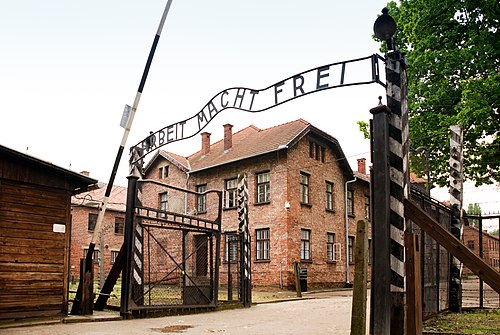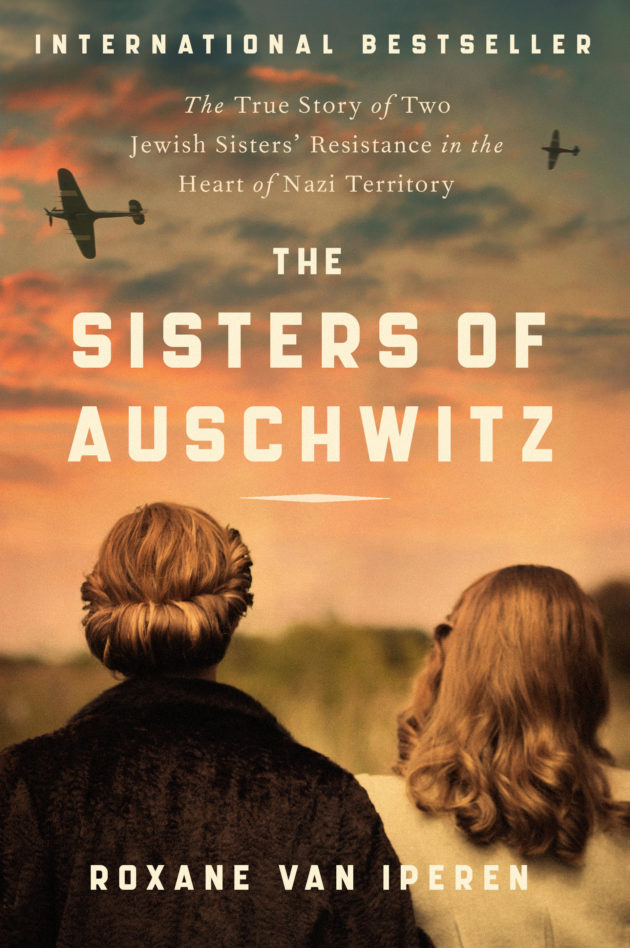
These Jewish Sisters Ran a Safe Haven During the Nazi Occupation
During the brutal occupation of Holland by the Germans, the brave sisters Janny and Lien Brilleslijper joined the Resistance and used a safe house in the woods as the basis for their operations. Called “the High Nest,” this secret refuge would become one of the most important safe havens in the country. Eventually, the occupants of the house were betrayed and sisters were sent off on one of the last trains to Auschwitz. Decades later, when Dutch writer Roxane Van Iperen and her family moved into the High Nest, she immediately was pulled into the history of the house and began to investigate.
The Sisters of Auschwitz (Harper, $17.99) documents her efforts to unravel its history and to track down the sisters, both of whom had miraculously survived the hell of those years. Van Iperen talks to Fiction Editor Yona Zeldis McDonough about how she went about conducting her research and what she learned along the way.
YZM: When you and your family first moved into The High Nest, did you have any clue about its rich and fascinating history?
RVI: No, we had no idea about its history, and the people in the neighboring towns either. We just fell in love with this old, robust house in the woods, with its timeless and almost anarchist appearance.

YZM: It seems like you did a monumental amount of research. How long did it take and how did you track down so many different people?
RVI: It took me six years to puzzle all the pieces together and make a day-to-day reconstruction, with research in different countries; from The Netherlands to Germany, from Israel to The US.
YZM: Reading this book made me feel like I was right there in the thick of it—how were you able to gather such specific and granular details so many years after the fact?
RVI: If you search well, there is a lot to find about those years—between 1940 and 1945, or even earlier, because I started at WWI. City archives, maps, identity cards, history records and criminal files. Over the years, I became very close with the Brilleslijper family and with the children that were hiding in The High Nest during the war.
They provided me with the personal details to fill in the blanks. Diaries, love letters, graduation papers and death certificates (or at least the Red Cross declarations for people who were killed in the gas chambers), and whatever I could use to make this reconstruction more personal. Two special moments during the process were when I was doing research at Yad Vashem and found the Dutch lease contract for The High Nest during the war, and when I found photographs of the Brilleslijper children playing freely in the back yard of The High Nest in the summer of 1943, when Jewish children around the country were being persecuted.
YZM: Let’s talk about Anne and Margot Frank—were you surprised that Janny and Lien knew and were friends with them? What did they think about the discovery of Anne’s diary and the worldwide interest it later sparked?
RVI: The Anne Frank connection is well known: the Brilleslijper sisters, Janny and Lien, are mentioned in the museum and in books as the women who saw the Frank sisters last in Bergen-Belsen. But it was a huge surprise to learn they were the ones who lived in our house during the war. Janny and Lien were also the ones who told Anne and Margot’s father, Otto Frank, who was frantically searching for his girls when the war was over, that the girls would not return. Furthermore, the Brilleslijper sisters tried to find a publisher for the Anne Frank diary, but were turned down. They were happy it was published years later, but especially Janny Brilleslijper struggled with the fact that she sometimes felt the war was being ‘romanticized’ in a lot of the reporting done on the Anne Frank story.
YZM: Do you think that having each other kept Janny and Lien alive while in the camps?
RVI: Definitely. The concentration camps were brutal experiments in pushing the boundary of humanity; how far can you dehumanize someone before actually killing them? Survival could depend on the mere luck of having someone with you that knew you before that horror, someone that mirrored your humanity so you could hang on another day.
YZM: Late in the book, Janny breaks down. Why do you think it happened at that moment, when the nightmare was finally over?
RVI: It makes sense she broke down the moment they were safe, back in Amsterdam. At any time before that, it would have meant death. For both her and her sister Lien.
YZM: You write, “I realize that the true restoration of The High Nest was not about repairing its walls but about reconstructing the exceptional events that took place between them.” Care to elaborate?
RVI: As special as the house is, in the end our lives are never altered by walls or roofs. We are, however, influenced by the actions and choices of the people that came before us, especially the people who fought for justice and against oppression. Janny and Lien saved many lives and are an example of fearlessness and resilience. Getting to know them and reconstructing their journey, sometimes tragic, sometimes heroic, provides a spiritual safe place for many.



